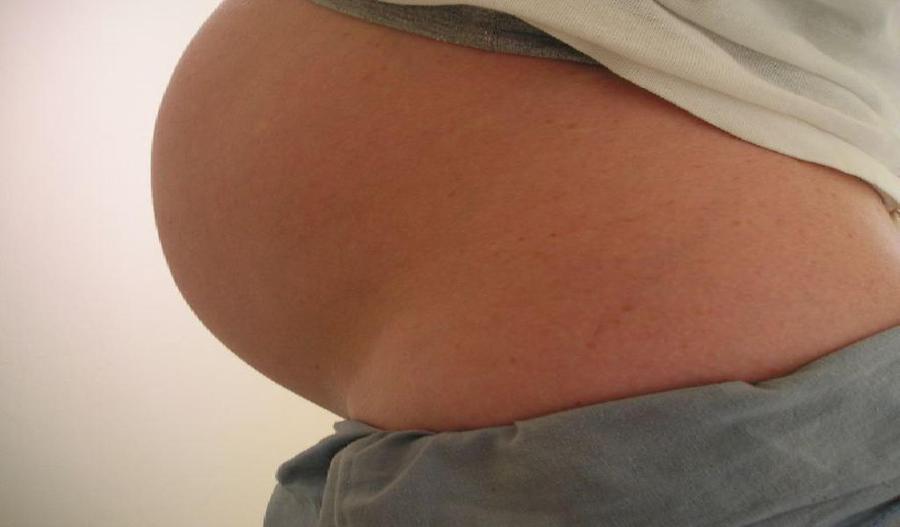Female soldiers who give birth within six months of returning from military deployment face twice the risk of having a preterm baby as other active-duty servicewomen, a new study from the Stanford University School of Medicine has found.
The study, which examined 12,877 births to American soldiers from 2011-14, published online March 1 in the American Journal of Epidemiology. In total, 6.1 percent of births studied were premature, meaning the baby was born three or more weeks early. But among women who had recently returned from deployment, 11.7 percent of deliveries were premature. Women giving birth soon after deployment were, on average, younger than other military mothers, and with lower education and lower pay, the study found.
“What’s important is the timing of deployment,” said lead author Jonathan Shaw, MD, clinical assistant professor of medicine at Stanford. “Pregnancies that overlapped with deployment or the period of returning home were much more likely to end in preterm birth, which has impacts not only on the health of the infant, but also on the mother and family.”
Premature birth can cause problems for the infant’s vision, hearing, breathing and digestion, as well as lifelong developmental and learning disabilities. Families face financial and caregiving burdens associated with meeting the child’s needs.
Shaw and his colleagues used the Stanford Military Data Repository, which contains de-identified medical and administrative data on United States Army soldiers. They identified pregnant servicewomen in the database for whom at least a year of medical data prior to the birth was available. The study examined only spontaneous premature birth, excluding early deliveries that were planned by physicians to preserve the health of the mother or infant.
“This database allows us to explore the universal issue of healthy mothers and babies, and also the pragmatic issue of how scientific insights can support our servicewomen and contribute to military readiness,” said Lianne Kurina, PhD, associate professor of medicine at Stanford and senior author of the study.
Considering risk factors
In their analysis, the scientists considered many factors thought to potentially affect the risk of premature birth. They compared women with zero, one, two and three or more lifetime deployments; looked at the timing of deployment in relation to the timing of birth; and examined whether having a current or past diagnosis of post-traumatic stress disorder influenced the risk of preterm delivery. Half of the women studied had been deployed at least once.
The overall rate of premature birth, 6.1 percent, was lower than that within the general U.S. population, which was unsurprising given that soldiers have low rates of known prematurity risk factors, such as obesity and advanced maternal age.
The team found that having recently returned from deployment was strongly associated with a higher risk of preterm delivery, regardless of how many times the mother had been previously deployed. Women who gave birth within six months of returning home were twice as likely as mothers who had never been deployed to have a premature delivery, while women who gave birth seven or more months after returning from deployment faced no increase in prematurity risk. Among those who had recently returned, more lifetime deployments were linked to an increased risk of premature delivery: Recently returned soldiers were 1.6 times more likely, 2.7 times more likely and 3.8 times more likely than never-deployed women to deliver early if they had a lifetime total of one, two, or three or more deployments, respectively.
Women who had been diagnosed with post-traumatic stress disorder were no more likely than other women to deliver prematurely, although only 4 percent of women in the study had a past or current PTSD diagnosis. (Prior research by Shaw and his colleagues found a correlation between post-traumatic stress disorder and premature delivery in mothers who are military veterans.)
Pregnancy planning
Of the women who gave birth within six months of returning from deployment, 74 percent were deployed in the period seven to 10 months before giving birth, suggesting that conception occurred during deployment in many cases. Pregnancy during deployment is considered a medical emergency, requiring immediate evacuation from the combat theater.
“The concerns raised by these findings are heightened in the context of prior research documenting high rates of unintended pregnancy in the military and emerging evidence that the most reliable forms of contraception (long-acting reversible contraceptives) are underutilized in the Army, especially around the time of deployment,” the authors wrote in the study’s discussion.
“This study shows that the time around deployment is a period during which we should empower our soldiers to prevent unintended pregnancies,” Shaw said. In addition, these findings could be used to help counsel soldiers who plan to have children during their years of military service.
“It’s reassuring that deployment itself is not a risk factor for having a premature baby,” Shaw said. But soldiers should know about the risks of becoming pregnant around the time they are deployed, he added. “We could tell them, ‘It’s a pretty stressful time; consider returning home and settling in for a few months before you add to your family.’”
Other Stanford authors of the paper are postdoctoral scholar D. Alan Nelson, PhD; Kate Shaw, MD, clinical associate professor of obstetrics and gynecology; and Ciaran Phibbs, PhD, associate professor of pediatrics.
Jonathan Shaw is a member of Stanford’s Child Health Research Institute.
The research was supported by the Stanford Clinical and Translational Science Award to Spectrum (grant UL1 TR001085) from the National Institutes of Health. All data used in the study were provided under a cooperative agreement with the United States Army Medical Command.
Stanford’s Department of Medicine also supported the work.


